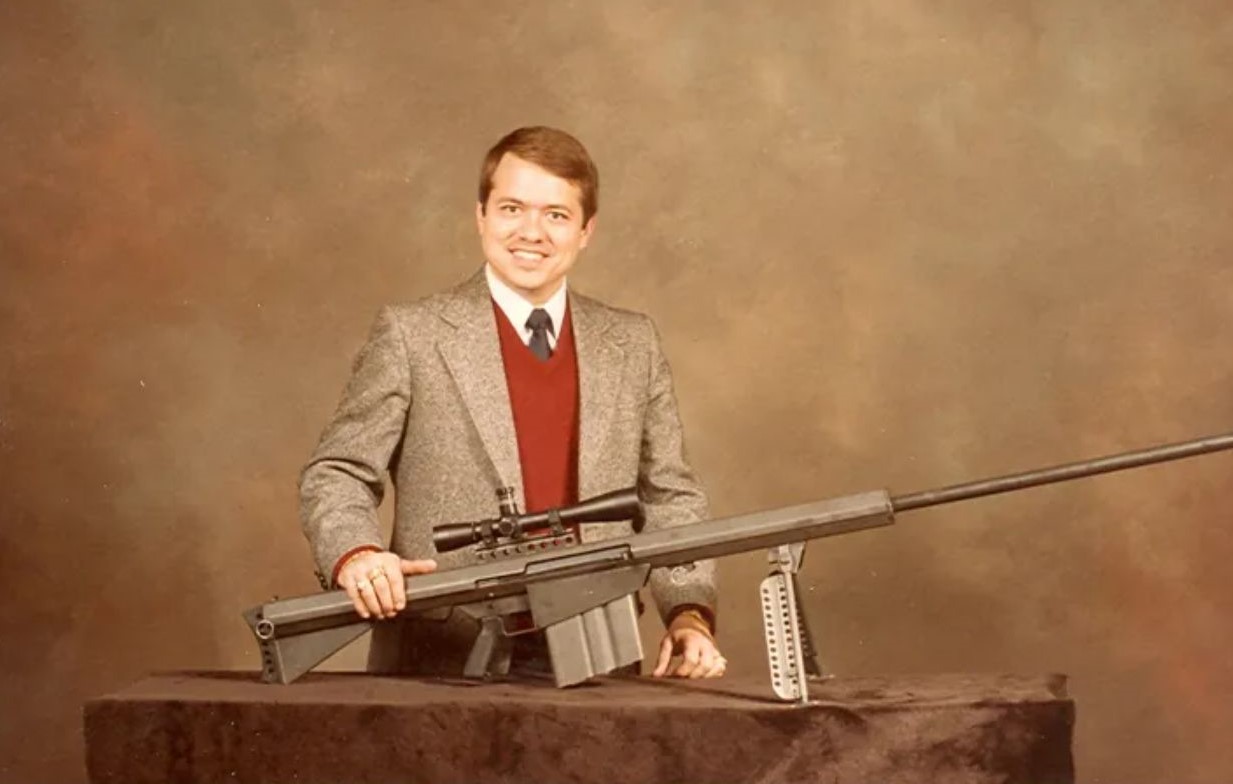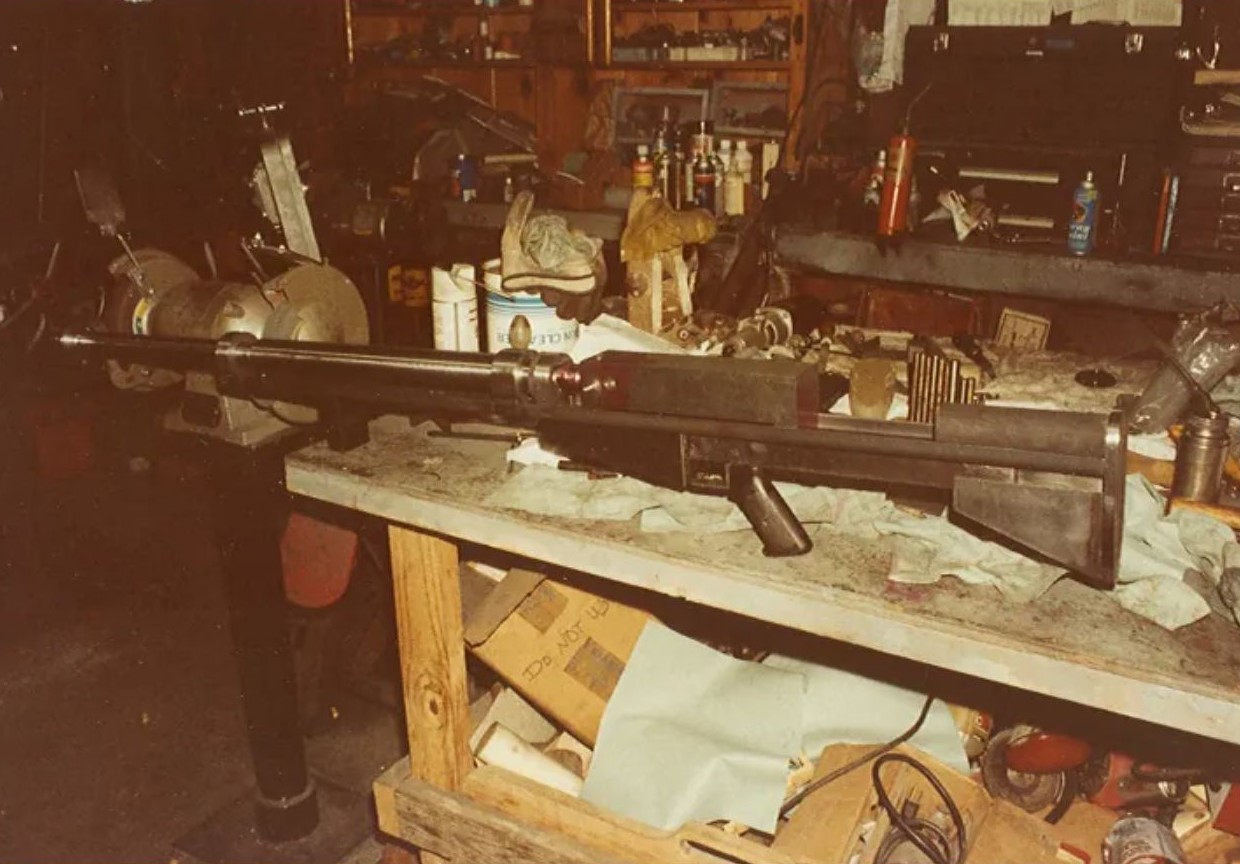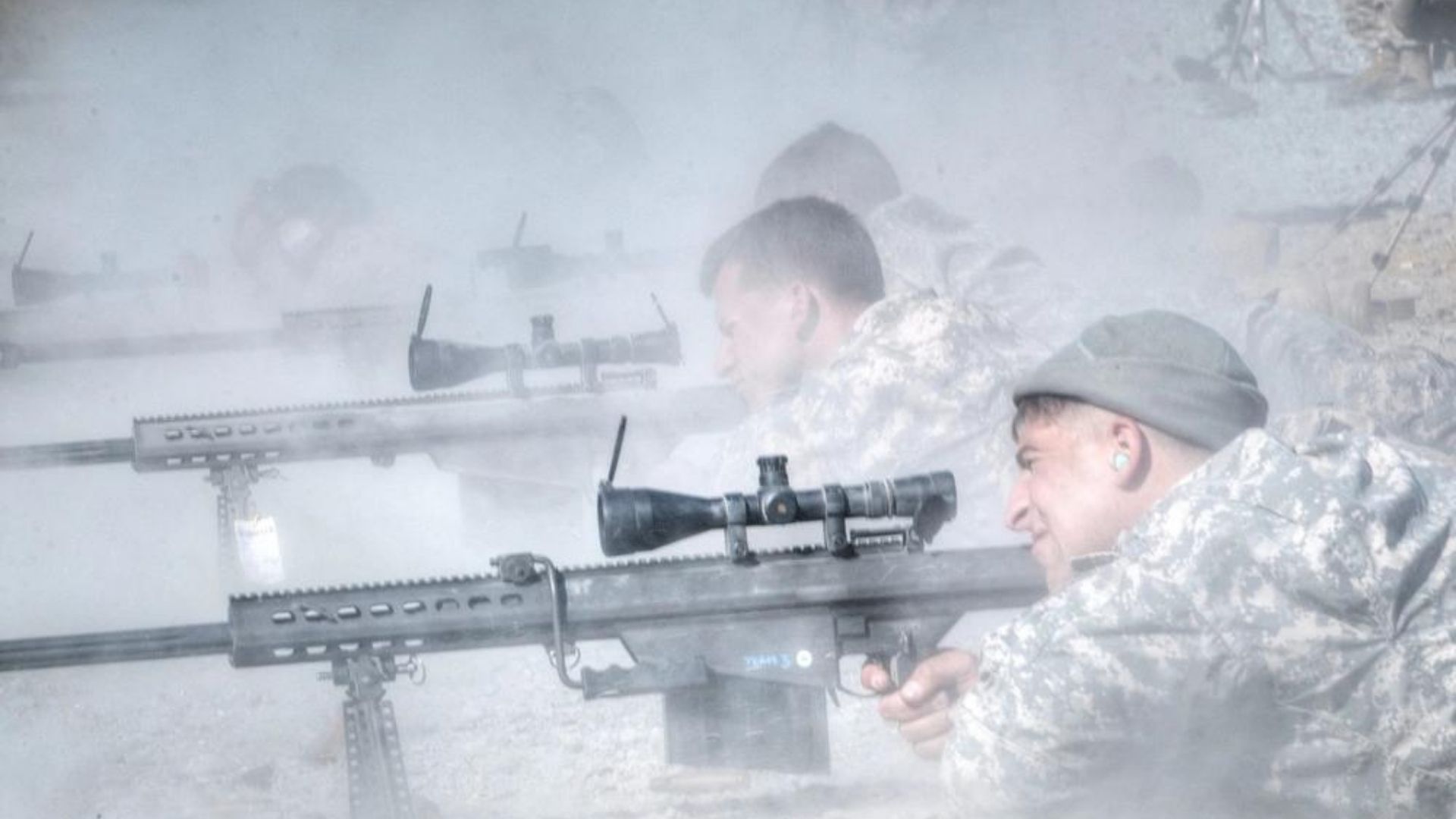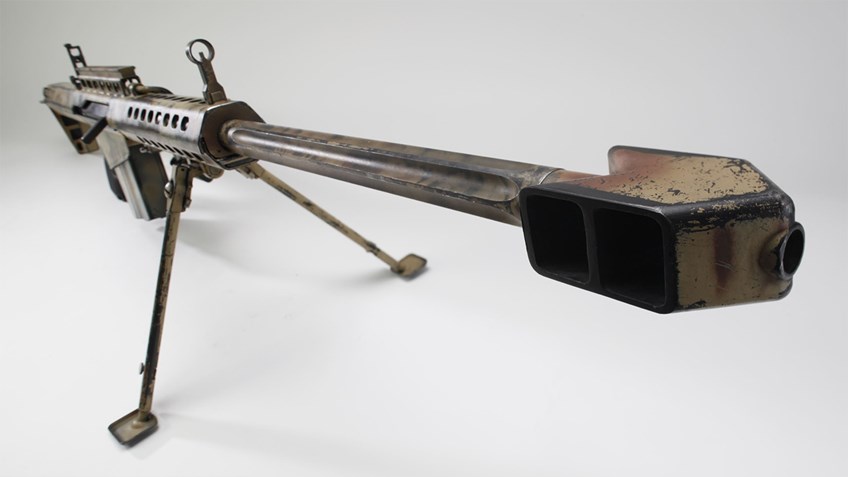The story of the M82 begins with Ronnie Barrett, a photographer with no formal gunsmith training.
In the early 1980s, while photographing a river patrol boat, similar to those used during the Vietnam War, Barrett noticed a .50 caliber machine gun prominently silhouetted in one of his pictures. This sparked an idea. He realized there wasn’t a rifle chambered for the .50 caliber cartridge and decided to create one.

Barrett started designing at his dining room table, sketching the blueprints for what would become the Barrett .50 caliber rifle. Working in a gravel-floored garage, he hand-machined the parts and assembled the first prototype. Despite these humble beginnings, the rifle quickly proved successful. The original design was crude, but it worked, and Barrett’s vision began to take shape.

From Concept to Combat
The Barrett M82 was ready just in time for the Gulf War. It made its combat debut with the United States Marine Corps and performed impressively in the field.

The rifle could deliver heavy firepower from a distance, making it a valuable asset on the battlefield. Soon, various NATO and non-NATO countries adopted it into their arsenals. The M82 proved its worth in combat situations, providing a unique capability that many military forces found indispensable.
The Rifle’s Specifications
The M82 is chambered in the powerful .50 BMG (12.7×99mm NATO) cartridge, known for its long-range accuracy. It can hit targets over a mile away (approximately 1,800 meters). The rifle itself is quite hefty, weighing around 30 pounds, which limits its mobility. It uses 10- or 20-round box magazines and generates significant recoil.

To manage this recoil, the M82 features a large rectangular muzzle brake that directs propellant gases outward and to the sides. This muzzle brake significantly reduces felt recoil, making the rifle more manageable for the shooter. Additionally, its fluted barrel reduces weight and aids in heat dissipation, ensuring the rifle remains effective during prolonged use.
The Barretts accepted into service with the United States military are designated M107. These models have slight modifications, including a longer accessory rail and a rear grip for improved handling. The M107’s enhancements make it even more suited for military use, providing better ergonomics and accessory options.
Anti-Materiel vs. Sniper Rifle
While the M82 is often referred to as a sniper rifle, it is also an anti-materiel rifle. An anti-materiel rifle is a type of firearm designed to destroy or disable military equipment, vehicles, and fortifications rather than targeting individual soldiers. I vividly remember being told as a young cadet to consider load-bearing equipment (worn on their bodies) as materiel.

These rifles typically fire large-caliber ammunition, such as the .50 BMG (12.7×99mm NATO), and are capable of penetrating armor, walls, and other barriers.
They are used to engage targets like vehicles, aircraft, communications equipment, and unexploded ordnance from long distances. Due to their power and range, anti-materiel rifles are essential tools in modern military arsenals for neutralizing high-value targets and providing tactical advantages.
Unlike bolt-action precision sniper rifles, the M82 is a semi-automatic weapon, which can affect its accuracy.
The semi-automatic design uses a recoil-operated mechanism, which can introduce slight inconsistencies compared to the manual action of a bolt-action rifle. However, in its anti-materiel role, this doesn’t pose a significant problem.
The M82 excels at destroying unexploded ordnance and engaging soft or lightly-armored vehicles and large static targets. Its semi-automatic action and powerful cartridge make it ideal for these tasks, where pinpoint accuracy is less critical. The rifle can disable vehicles, penetrate barriers, and neutralize threats from a distance, making it a versatile tool in modern warfare.
Design and Features
The M82’s design incorporates several features to enhance its performance and usability. One of its most distinctive features is the rifle’s large muzzle brake. The muzzle brake mitigates the rifle’s substantial recoil by redirecting propellant gases, making it more comfortable to shoot.
The M82’s fluted barrel not only reduces weight but also improves heat dissipation. This feature is particularly important during sustained fire, as it helps maintain the barrel’s integrity and accuracy. The fluting also gives the barrel a distinctive appearance, setting the M82 apart from other rifles.

The rifle’s magazine capacity, typically 10 or 20 rounds, provides ample firepower. This capacity allows the shooter to engage multiple targets or deliver sustained fire without frequent reloading. The magazines are robust and designed to handle the stresses of the .50 BMG cartridge.
The M82 in Action
The M82 has seen extensive use in various conflicts and military operations. Its ability to engage targets at long ranges and its effectiveness against a wide range of threats have made it a valuable asset. In the Gulf War, the M82 was used to great effect, demonstrating its capability to take out enemy equipment and fortifications.

In addition to its military applications, the M82 has also found use in law enforcement and special operations. Its long-range precision and stopping power make it suitable for roles such as counter-sniper operations and disabling vehicles from a safe distance. The rifle’s versatility and reliability have made it a preferred choice for many tactical units.
Variants and Evolution
Though the original M82 Barrett is no longer in production, the M82A1, an improved variant, continues to be manufactured. The M82A1 features several enhancements over the original design, including better materials, improved ergonomics, and the ability to mount a wider range of optics and accessories.
These improvements have kept the M82A1 relevant and effective in modern combat scenarios.
Barrett now offers a variety of other rifles, including bolt-action, semi-automatic, and bullpup-style (Model 95) configurations. These rifles cater to different operational needs and preferences, providing options for various tactical and strategic roles. The company’s continued innovation ensures that its firearms remain at the cutting edge of military technology. These are some of the most desired firearms in the world and Barrett has the waiting list to prove it.
Notably, the M82A1 has been designated the official rifle of Tennessee. This designation reflects the rifle’s significance and the pride taken in its development and production.

Conclusion
The Barrett M82’s journey from a photographer’s inspiration to a staple in military arsenals worldwide is a testament to innovation and determination. Its design and capabilities have made it a valuable tool for various military applications, particularly in the anti-materiel role. The M82 remains a formidable and respected firearm in modern warfare.
The M82 has repeatedly proven its worth, providing unmatched firepower and versatility. Its ability to engage targets at long ranges and its effectiveness against a wide range of threats has cemented its place in military history. As technology and tactics continue to evolve, the M82’s legacy will endure, representing a significant achievement in firearm design and engineering.
The rifle’s impact on modern warfare cannot be overstated. It has changed how military forces approach long-range engagements and provided a critical capability that few other weapons can match. The Barrett M82 is not just a rifle; it is a symbol of American innovation, precision, and power.
__
Disclaimer: SOFREP utilizes AI for image generation and article research. Occasionally, it’s like handing a chimpanzee the keys to your liquor cabinet. It’s not always perfect and if a mistake is made, we own up to it full stop. In a world where information comes at us in tidal waves, it is an important tool that helps us sift through the brass for live rounds.










COMMENTS
You must become a subscriber or login to view or post comments on this article.